Combat aircraft. How a samurai emerged from a musketeer
We continue to delve into the thirties of the last century. At this time, a lot of really beautiful cars appeared. Our today's hero is the fruit of a very peculiar experiment, mixed with a passion for twin-engine fighters, imperial ambitions and war far from their own bases.
Two countries are “to blame” for the appearance of this aircraft: China and France. The French built a very successful "Pote" P.630, which for some time became a reference point for everyone in the design of aircraft of this class, and China ... China was unlucky, and it became the arena for the realization of Japanese imperial ambitions.
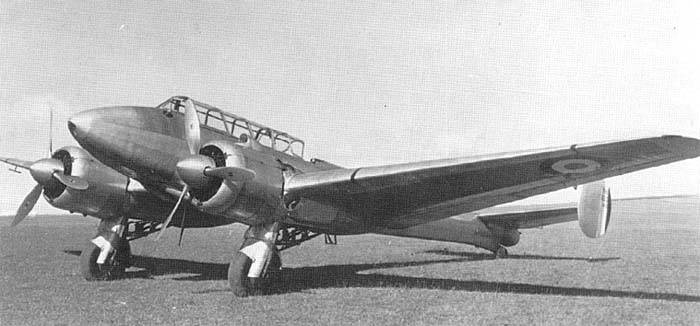
"Pote" R.630
But the Japanese did not succeed in everything in China. Firstly, it turned out that the Chinese have an air force, armed not in the worst way. Soviet I-15 and I-16 - for the end of the 30s, and Japan's attack on China took place in July 1937, when Polikarpov's fighters were quite relevant to bring down the products of the Japanese aircraft industry to the ground.
And already in 1938, in the main headquarters of the sea aviation began to talk in earnest about the need for a new plane for escort. Not inferior in range to G3M bombers and capable of protecting them along the entire route. Because the Chinese surprised with their tactics, not wanting to attack Japanese planes when they were escorted by fighters. But as soon as the escort went back, a show began, which the Japanese pilots did not like very much.
There were attempts to make escort fighters out of G3M, armed with bombers to the maximum, but I-16s made chops from them.
A gesture of despair is the purchase by the Japanese of Seversky 2RA-B3 long-range fighters in the United States.
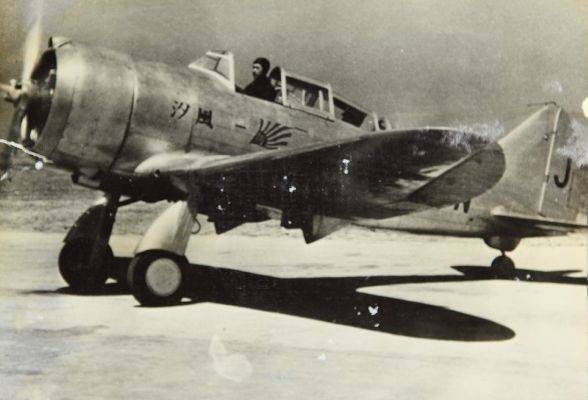
Tests in combat showed that the fighter was not very suitable for maneuvering combat, despite the rather strong armament of four heavy machine guns.
And so the French released Potet P.630, which we have already discussed.
The plane was quite good, and therefore the practical Japanese simply decided to put it in a copier. And do something of your own, but very similar.
The aircraft was planned to have a twin-engine layout, but the assignment stipulated that it was supposed to be able to conduct a maneuverable battle against modern single-engine fighters.
The speed was determined at 518 km / h, the flight range was 2100 km and 3700 km with outboard tanks. The plane was supposed to gain altitude of 4000 m in 6 minutes. Armament - a 20-mm cannon and two 7,7-mm machine guns in the bow. Defensive armament - a pair of 7,7-mm machine guns in remote-controlled towers.
The main difficulty, as you know, was that it was difficult to ensure the maneuverability of a twin-engine aircraft. And if you compare with the latest aircraft ... It is worth noting that when they started thinking about this fighter, the A6M was already flying on tests, delighting everyone.
The second difficulty was to find the fulfillment of desires. It is clear that Mitsubishi, which was testing the Zero, to put it mildly, were not happy with the prospect and politely withdrew from participation.
But the competitors from "Nakajima" were more accommodating, since they also wanted to bite off the naval cake with their mouth full. Moreover, the B5N carrier-based torpedo bomber of the company took its rightful place in the ranks of the Japanese carrier-based aircraft.
And then in 1939 there was an unexpected lull. So much so that the work practically stopped. But it was not the Nakajima employees who were to blame, but the Japanese troops that were successfully operating in China. The intensity of action there noticeably weakened, the Japanese industry mastered the production of outboard tanks for the A5M4, which began to fly much further. Plus, he went to the A6M troops, which flew decently far without tanks.
And so slowly, until 1941, Nakajima worked on the plane. Only on May 2, 1941, the first flight took place. In general - not bad, no one was in a hurry, so the plane turned out to be quite confident. And with a bunch of new products that are not typical of Japanese aviation.
Engine. More precisely, the engines. And not because the plane was twin-engine, but because the engines were actually different. 14-cylinder air-cooled "Nakajima" NK1F "Sakae" with a capacity of 1130 hp. But on the left wing was "Sakae" type 21, and on the right - "Sakae" type 22. Modifications were distinguished by a different direction of rotation of the propeller. It was a strong move as it almost completely ruled out reversal due to reactive momentum.
Two towers with a pair of 7,7 mm Type 97 machine guns in each with hydraulic control were supposed to reliably cover the rear. Two of the same Type 97 machine guns and a Type 20 99 mm cannon fired forward.
In general, the hydraulics involved not only turret control, but also the operation of the flaps, the release and retraction of the landing gear.
"Nakajima" handed over the first two aircraft for testing of naval aviation and ... suffered a crushing fiasco!
The plane was clearly overweight. Maneuverability naval I didn’t like it at all, although, to be honest, for a twin-engine aircraft it was just fine. But for some reason the object of comparison was "Zero", which, of course, won in everything except the flight range. Weird approach, to be honest.
But the hydraulics system turned out to be very overloaded and complex, the towers came out very heavy, and most importantly, the guidance accuracy was simply not amenable to criticism. The guidance was very inaccurate.
In general, looking at the plane, the naval pilots said that we do not need such happiness, we have a Zero, and that is enough.
Nakajime, however, sweetened the pill. Since the plane was not inferior to the "Zero" in speed and exceeded in flight range, the company was offered to convert the fighter into a high-speed coastal reconnaissance aircraft, carrying out work to lighten it.
There was nowhere to go, and "Nakazima" fulfilled all the requirements. The fuel reserve was reduced from 2200 liters to 1700, the turrets were removed and replaced with a conventional turret, instead of two different engines they left one Sakae model - type 22.
Since the capacity of the tanks was reduced, this was compensated by the possibility of suspension of two tanks of 330 liters each.
I had to re-arrange the working compartment of the crew. Now the pilot and the radio operator were housed in the bow, who was armed with a 13,2-mm Type 2 machine gun ("Hotchkiss"), and the navigator was located in a separate cockpit, below the level.
A pilot's armored seat and protected tanks were added to the innovations. The level of god in terms of armor for the Japanese aviation of the time.
The aircraft was named Fleet Scout Model 11, abbreviated as J1N1-C, and entered service in July 1942. That is, when everything was fine for Japan.
There was no particular need for a reconnaissance aircraft, because the aircraft was produced more than slowly, which only had a positive effect on the quality of the assembly. In the first year, only 54 scouts were released. In 1943, the aircraft was renamed J1N1-R.
The first use of the J1N1-R occurred in the Solomon Islands. The plane was used quite successfully, but, as they say, without hysteria. Scout, he is scout anywhere. Secondary plane.
It is possible that J1N1-R would have sunk into obscurity because of the small series, but the Germans helped. I will not say for certain how it happened, but the idea of "schräge Musik", that is, installing weapons at an angle to the fuselage, came to the Japanese.
There is evidence that the first unit to carry out the installation of weapons in the field was the 251st kokutai under the command of Yasuno Kodzono.
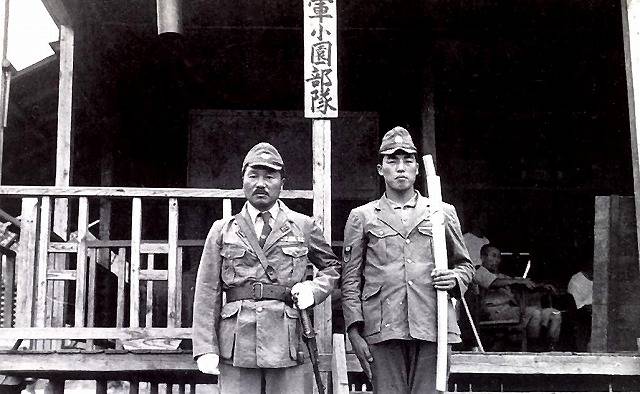
Yasuno Kodzono (left)
In general, the kokutai was reconnaissance, but the composition somewhere got hold of air cannons and installed them, turning the scouts into fighters.
Two 20mm cannons fired up and down at an angle of 30 degrees, and two down and down.
The result is a fairly sane night fighter with heavy weapons. In fact, everything could have ended in nothing, but it turned out that reconnaissance fighters intercepted and shot down several B-17s. And this is already serious. And the naval command was so interested that the self-made modification was approved as "Nakajima" J1N1-C Kai and even received its own name "Gekko", that is, "Moonlight".
The pace of production jumped at the Stakhanovian pace. Over the next year, 180 Gecko night fighters were produced. Considering that it was 1944 in the yard and the Americans were seriously visiting the Islands, the night interceptor turned out to be more in demand than the scout.
By the way, the cannons firing forward and downward were not very effective when attacking bombers, but they could quite normally attack, for example, submarines that float up at night to charge batteries.
For such attacks, there was a spot in the nose for a spotlight.
There have been attempts to use the J1N1 as a kamikaze aircraft. It turned out okay, two bombs of 250 kg each were attached to the suspension nodes of the fuel tanks, which constituted the striking force of the kamikaze. However, this practice was not approved by the command, because the J1N1 was among the aircraft that could catch up with the B-29.
Installed on J1N1 and radars. The practice of working with the radar belonged to the same 251 kokutai and its commander, captain of the second rank Kozono. It was the Ta-Ki 1 Type 3 Kai 6, Model 4 (H6), weighing over 100 kg, which was a copy of the British ASB radar. It was used on heavy bombers and flying boats mainly to search for ships.
Kozono decided that the N6 could also detect group air targets, after which the radar was installed on several interceptors by the maintenance forces. Combat practice has shown that the N6, to put it mildly, is unsuitable for work on air targets.
But in the second half of 1944, the 18-Shi Ku-2 (FD-2) radar appeared, which weighed less (about 70 kg) and was designed to work just for air targets. A single FD-2 aircraft could spot from 3 km, and a group from 10 km.
The tests were carried out by the crews of the Yokosuka kokutai, the radio operator controlled the radar. The results were found to be satisfactory, and all Geckos produced since the second half of 1944 received the FD-2 radar as standard equipment.
The efficiency of the FD-2 was so-so, often the pilots saw the target earlier than the radar, but, nevertheless, until the end of the war, the Toshiba company produced these devices (and produced more than a hundred), most of which were installed on the Gekko ".
The first combat use of "Gecko" took place on July 20, 1942. Exploration was conducted in the Cape Horn area in Australia. And already on August 2, 1942, the first loss occurred. The Gecko, conducting reconnaissance over Prot Moresby in New Guinea, was intercepted by the Airacobra and shot down.
In the future, the "Gecko" was entrusted with the tasks of reconnaissance, photography and monitoring of the actions of the allies in the entire theater of operations. So, despite the small number of built J1N1s, they got a very, very considerable combat load.
New Guinea, Guadalcanal, Solomon Islands, Rabaul - in general, "Geckos" worked everywhere.
Basically, the high speed allowed the scouts to calmly carry out their tasks, but sometimes quite peculiar situations occurred.
In the area of Lunga Point, Lieutenant Hayashi's plane was photographing. His Gekko was covered by 11 (!) Zero fighters. To intercept the Americans raised 12 Wildcat fighters. The fighters were unable to properly cover their ward, and five American fighters attacked the Gecko's crew at once.
But Hayashi turned out to be a very difficult opponent. First, one F4F that jumped forward got out of its forward-facing armament, started to smoke and left the battle. Then the second American plane caught fire and crashed into the sea. The fact is that Hayashi had at his disposal one of the aircraft of the first series, with the same remote-controlled machine-gun turrets, which were later abandoned due to their inefficiency.
Apparently, the Japanese crew was good and wanted to live. The fight between five Wildcats and one twin-engined Gecko lasted a full 20 minutes. Of course, even when the three of them remained, the Americans simply riddled the Japanese plane, and it fell into the water.
The most interesting thing is that when the Americans returned to the base, they reported on the destruction ... "Focke-Wulf" Fw-187, which probably caused a very peculiar reaction from the command.
But: for 20 minutes, five Wildcats chased one Gekko, which did not just snap, but did it very effectively.
In general, the Gekko scouts did their work as much as their flight characteristics allowed, and they allowed until the moment when the Americans had the flying nightmare Corsair. Then it became very difficult, but it was so throughout the Japanese naval aviation.
The night fighter with "oblique music", implemented by the already mentioned Yasuno Kodzono, also fought very well.
In general, Captain Kozono can be safely called the father of Japanese night fighter aircraft.
So, Kozono proposed to equip two J1N1-C out of nine scouts included in the 251st Kokutai with cannons. The crew was reduced to two people. Two aircraft were converted, but only one reached combat use. One was smashed on the way to Rabaul.
And on May 21, 1943, the first flight of the J1N1-C-Kai night fighter took place on a free hunt. The crew consisted of pilot Shigetoshi Kudo and navigator Akira Sugawara.
At 3.20 am, the crew noticed a B-17 heavy bomber, which had just dropped bombs on the airfield in Rabaul. After 7 minutes of chase, Kudo walked unnoticed under the American car and fired a volley from the top pair of cannons at point-blank range. First, engines No. 3 and No. 4 were put out of action, and then No. 1 and No. 2.
B-17E "Honi Kuu Okole" from the 43rd group fell into the sea in fire. Only two people were saved, and one of the survivors, co-pilot John Rippy, was captured and executed. Bombardier Gordon Manuel managed to escape.
At 4.28 in the morning, Kudo attacked the second B-17 that was found, which was also shot down. The crew was killed.
Returning to base, to his delight, Kudo found out that he had spent only 178 rounds on two "Fortresses".
In total, Kudo destroyed 7 American bombers on the Gecko.
This is not to say that the successes were noticeable. Night Geckos shot down Fortresses on a regular basis, but since the number of fighters was small, the losses of the Americans were small.
In general, until November 1943, the Americans did not suspect that the Japanese had night fighters, attributing the losses to the Japanese anti-aircraft artillery. And only in November 1943, when American reconnaissance officers filmed the Rabaul airfield, did they find a twin-engine aircraft of unknown design in the pictures. In any case, he was named "Irving" according to the American classification.
The night fighter was no longer a secret, but the situation itself had already changed. The Japanese were unable to expand the production of night fighters, and the Americans, as they seized territories, began to use the B-25 and B-26 ground medium bombers, which turned out to be much more difficult opponents than the heavy B-17 and B-24.
Smaller and faster, capable of flying at low altitudes, the Mitchell and Marauder were very difficult to spot in the night sky.
Geckos operated in the night sky across the Pacific Ocean. Mariana Islands, Philippines, Guadalcanal - night fighters were everywhere.
However, gradually, thanks to the efforts of American bombers and fighter pilots, the number of Geckos slowly but surely decreased.
When groups of B-29s began to appear over Japan, it was the finest hour of the Gecko, which could both rise to the altitude at which the B-29s flew and catch up with the bombers in speed.
All the aircraft that could take part in the defense of Japan itself were hastily assembled into two regiments.
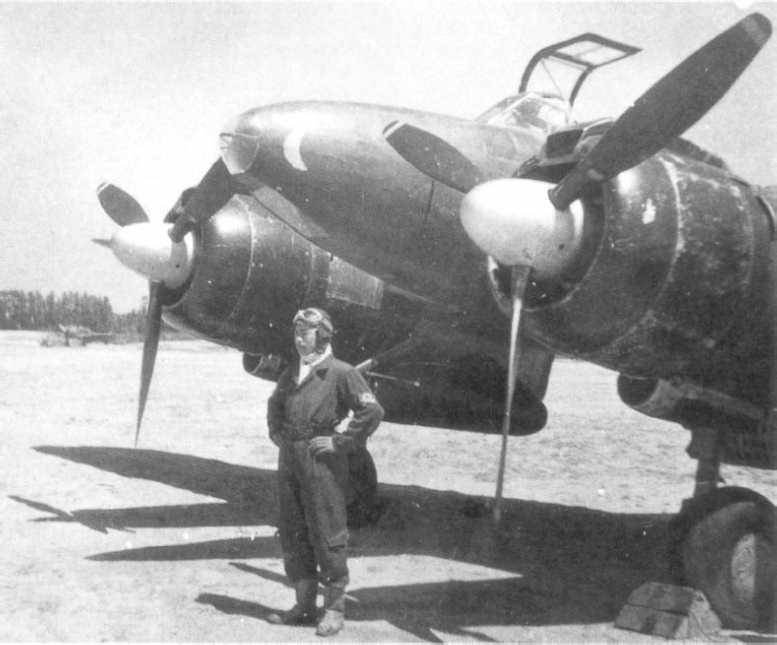
The first combat use of "Geckos" in the defense of their territory took place on August 20, 1944, when four "Geckos" attacked a group of B-29 and shot down two aircraft. Two Super Fortresses were damaged and could not reach their target.
In general, the success of the Gekko pilots was not very impressive in its effectiveness, after all, the plane was already outdated. But the J1N1 scattered the Fortress formations, preventing them from targeting bombing, which was more important than destroying individual vehicles.
The last official victory for J1N1 was won during the repulsion of the raid on Tokyo on the night of May 25-26, 1945.
The bottom line is this: the Japanese got a very interesting and good plane. Unlike its French role model, the Gecko proved to be more than an efficient machine. Moreover, its versatility evokes, if not admiration, then respect.
Fighter, scout, night fighter, anti-submarine patrol aircraft - the list is not bad. Even when the J1N1 was outdated, it did a pretty good job of holding off the American bombers' formations, winning victories.
Probably the only drawback of this car was just a scanty amount. A total of 479 units were manufactured. Of course, they could not have much influence on the course of the war, but the Gecko turned out to be a very decent combat vehicle.
LTH J1N1-S:
Wingspan, m: 16,98.
Length, m: 12,18.
Height, m: 4,56.
Wing area m: 40,00.
Weight, kg:
- empty aircraft: 4 852;
- normal take-off: 7;
- maximum take-off: 7 527.
Engine: 2 х "Hakajima" NK1F "Sakae-21" х 1130 hp
Maximum speed, km / h: 507.
Cruising speed, km / h: 333.
Practical range, km: 2.
Maximum rate of climb, m / min: 525.
Practical ceiling, m: 9 320.
Crew, pers .: 2 or 3.
Armament:
- two 20-mm cannon type 99 at an angle upward to the horizon;
- two 20 mm guns down;
- Suspension of two 60 kg bombs is possible.
On the J1N1-Sa, only upward cannons and sometimes a 20mm Type 99 forward cannon.
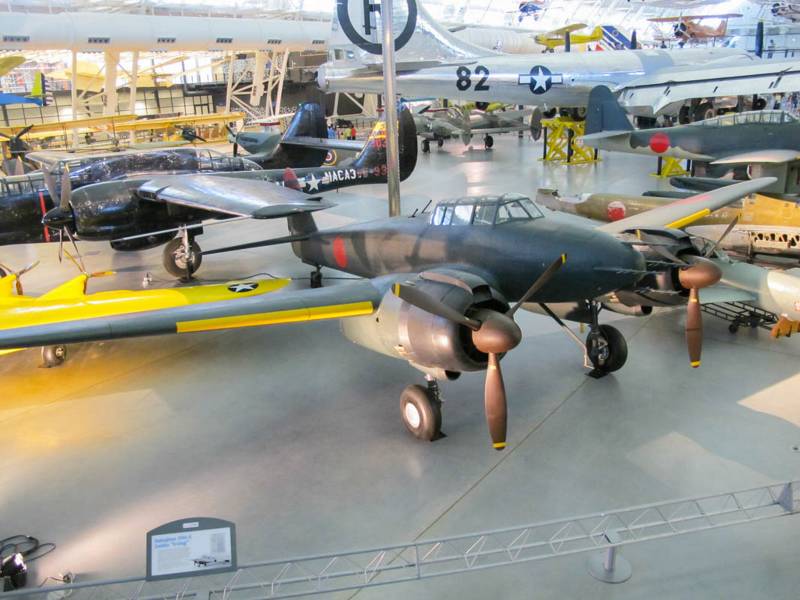
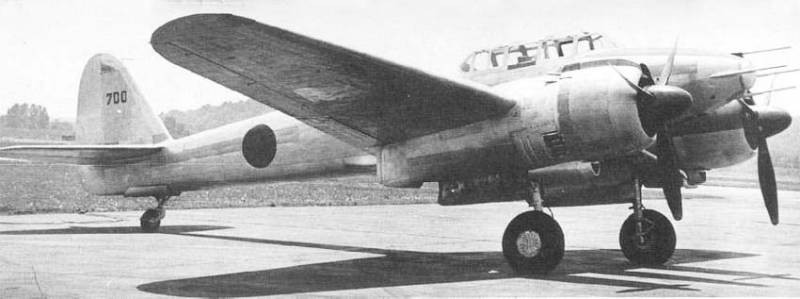
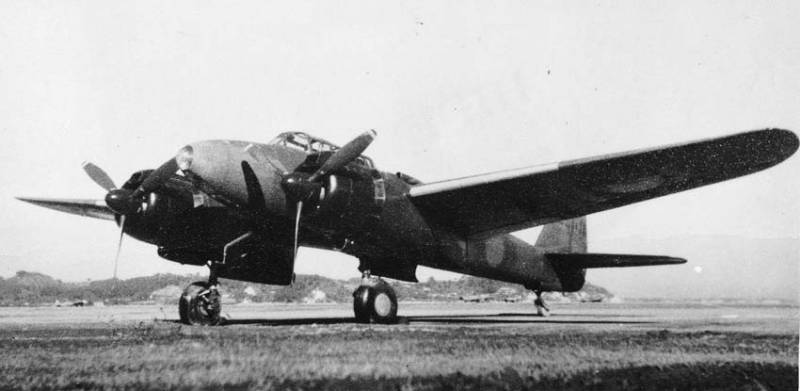
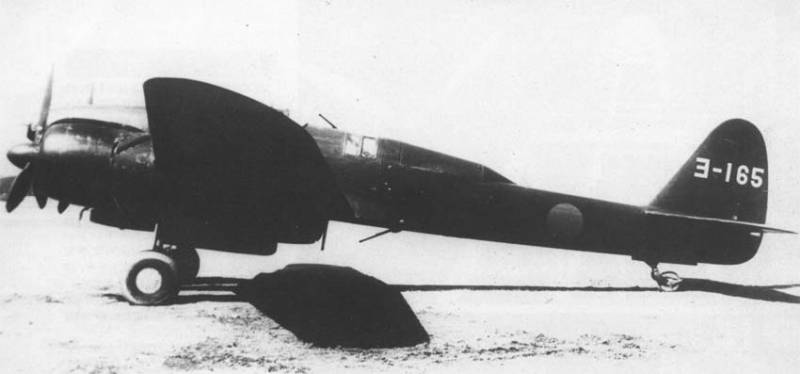
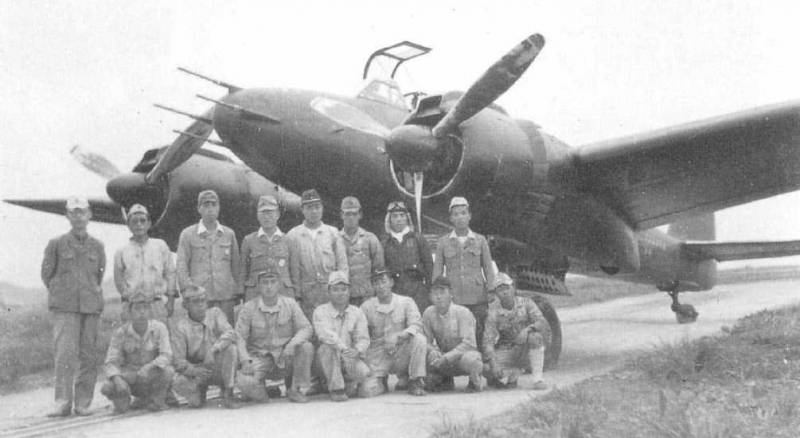
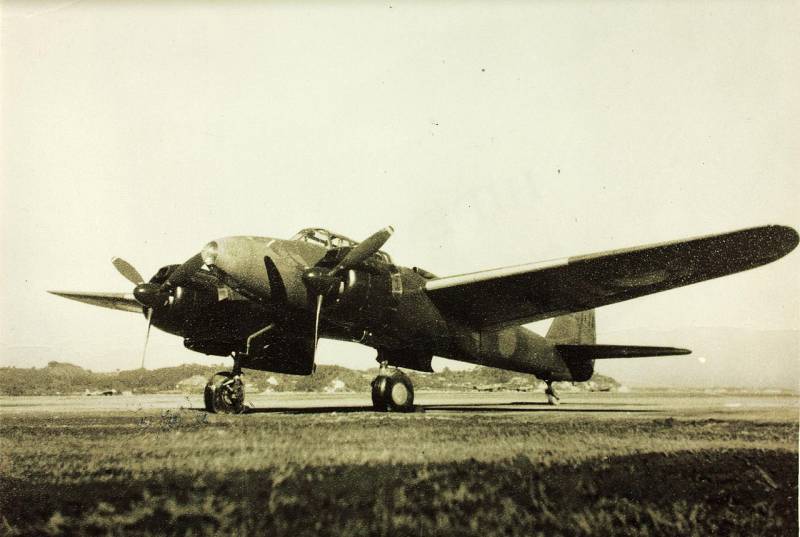
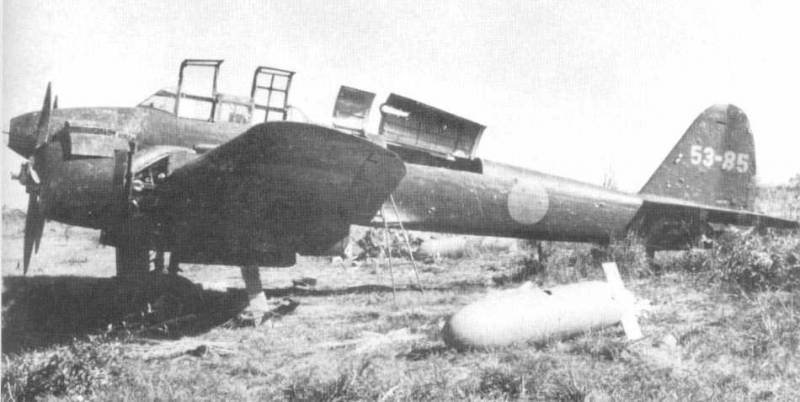
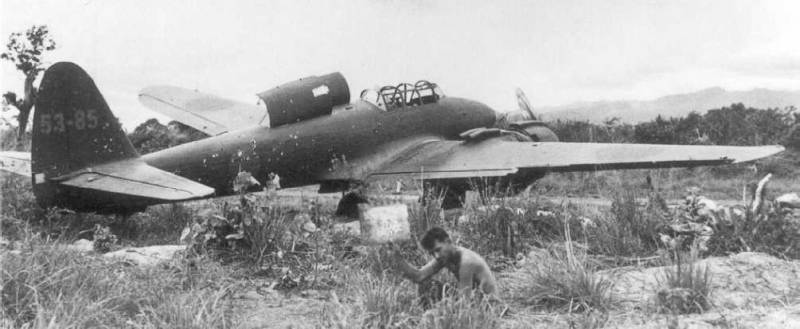
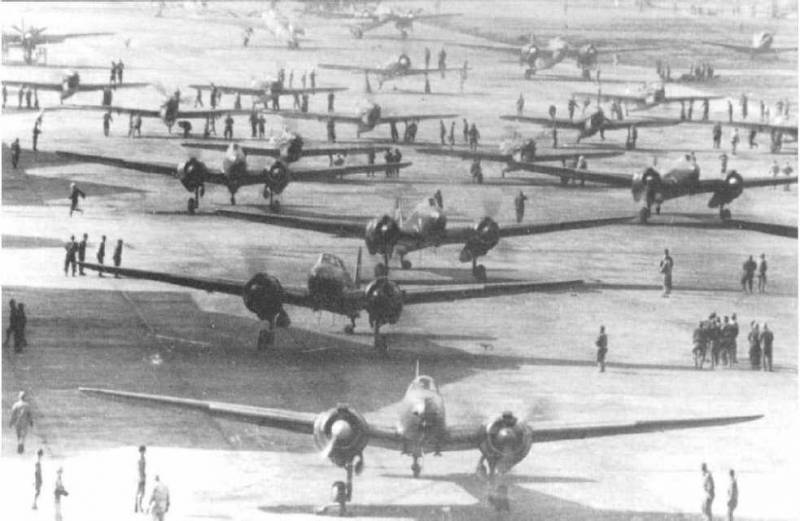
Information